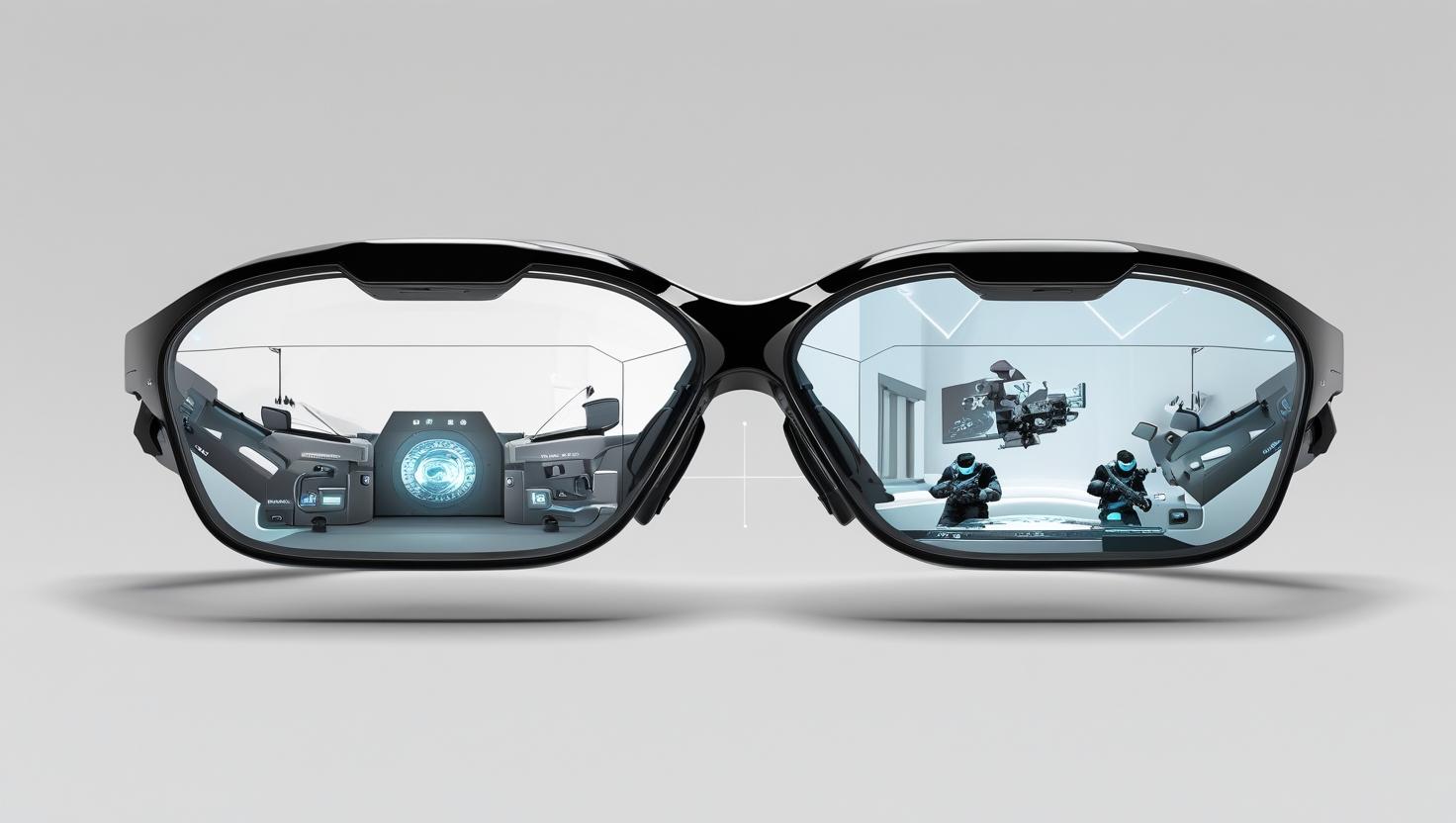The smart glasses market is rapidly evolving, moving beyond its early consumer-focused designs into advanced industrial, enterprise, and healthcare applications. These next-generation wearables are now being recognized as powerful tools for enhancing productivity, efficiency, and collaboration in real-time environments. At the core of this transformation are three major trends: hands-free operations, remote assistance, and edge computing. Together, they are reshaping the global smart glasses landscape, creating new growth opportunities across sectors.
Hands-Free Operations Redefining Workplace Efficiency
One of the most impactful advantages of smart glasses is the ability to operate hands-free. This functionality has been especially transformative in industries such as manufacturing, logistics, field services, and healthcare. Workers can access real-time information, instructions, checklists, or diagrams through a visual display without interrupting their tasks.
For instance, in assembly lines or maintenance operations, technicians can view step-by-step instructions or real-time diagnostics directly on their lenses. This eliminates the need to consult paper manuals or handheld devices, increasing speed and reducing errors. In medical environments, surgeons and doctors can refer to patient data or images while remaining fully focused on the procedure, significantly improving workflow and precision.
As wearable user interfaces become more intuitive, with advancements in voice control, gesture recognition, and eye-tracking technology, smart glasses are becoming an indispensable tool in many hands-on environments.
Download PDF Brochure @ https://www.marketsandmarkets.com/pdfdownloadNew.asp?id=148134046

Remote Assistance Becoming the New Norm
The growing demand for real-time remote collaboration has elevated remote assistance as a key driver in the smart glasses market. With smart glasses, frontline workers can connect with off-site experts or supervisors who see exactly what the wearer sees, providing guidance, troubleshooting, or verification without the need for physical presence.
This trend has gained particular momentum since the COVID-19 pandemic, which limited travel and forced organizations to rely on virtual tools for operations and training. In sectors such as energy, telecom, and aerospace, smart glasses enable faster problem-solving, reduced downtime, and lower operational costs by eliminating the need to fly experts to remote locations.
Moreover, smart glasses with built-in cameras and microphones, when paired with augmented reality (AR) overlays, allow for rich visual communication. Experts can annotate the user’s field of view, enhancing understanding and improving first-time fix rates.
Edge Computing Enhancing Real-Time Performance
Edge computing is another major force propelling the capabilities of smart glasses. By processing data locally on the device or nearby edge servers—rather than relying solely on cloud infrastructure—smart glasses can deliver faster, more reliable, and context-aware experiences.
In real-world applications, this means lower latency and greater responsiveness, which are crucial for time-sensitive tasks. For example, a logistics worker using smart glasses with edge computing capabilities can scan and process inventory data in real time, without connectivity delays. In field service, AI-powered glasses can identify faulty equipment and recommend solutions instantly, even in low-bandwidth environments.
Edge computing also reduces the burden on network infrastructure and improves data privacy, making smart glasses a more viable solution in regulated industries like healthcare and finance.
Market Outlook and Adoption
The global smart glasses industry is projected to reach USD 4,129.3 million by 2030 from USD 878.8 million in 2024; it is expected to grow at a CAGR of 29.4%., driven by demand from industrial enterprises, healthcare providers, and tech-savvy consumers. Leading companies like Microsoft (HoloLens), Vuzix, Google (Glass Enterprise Edition), and Epson are investing heavily in R&D to enhance functionality, ergonomics, and integration with enterprise platforms.
Moreover, the convergence of smart glasses with 5G, AI, and IoT technologies is unlocking new use cases and expanding their role in digital transformation strategies.
The smart glasses market is transitioning from novelty to necessity, especially in environments where efficiency, collaboration, and real-time data access are critical. With trends like hands-free operations, remote assistance, and edge computing at the forefront, smart glasses are no longer just wearable gadgets—they’re strategic assets in the future of work.
As these technologies continue to mature and become more affordable, adoption is expected to accelerate across a broader range of industries, making smart glasses a cornerstone of augmented and connected workspaces.
Frequently Asked Questions (FAQ)
1. What are smart glasses?
Smart glasses are wearable computing devices in the form of eyeglasses that display information directly in the user’s field of vision. They often feature augmented reality (AR), voice control, cameras, sensors, and wireless connectivity for hands-free interaction and real-time data access.
2. How do smart glasses enable hands-free operations?
Smart glasses allow users to access data, receive instructions, and interact with software applications without using their hands. This is enabled through voice commands, head gestures, or eye tracking, making them ideal for workers in industries like manufacturing, logistics, healthcare, and field services.
3. What is remote assistance in the context of smart glasses?
Remote assistance refers to the ability of smart glasses to stream live video and audio to a remote expert or support team. The expert can see what the wearer sees and provide real-time guidance, instructions, or troubleshooting help—greatly reducing travel costs and downtime.
4. How does edge computing improve the performance of smart glasses?
Edge computing allows data processing to happen closer to the source—on the smart glasses themselves or nearby edge servers—instead of sending everything to the cloud. This reduces latency, improves response time, and enables real-time functionality even in low-bandwidth environments.
